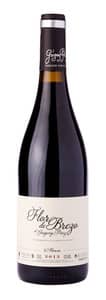Gregory Perez is a Bordeaux educated oenologist, and his worked with both Grand-Puy-Lacoste and Cos d’Estournel. With roots in Spanish Bierzo, in northwestern Castilla bordering Galicia, he moved there in the early 2000’s.
After his first steps in France, his roots and a friend´s encouragement brought him to Spain, the Bierzo region, to be exact. There he embarked on a project called Mengoba, where he shares a philosphy with many of his generation, which highlights the personality of the various plots, leading to the production of original natural wines.
Pérez has acquired a deep knowledge of the soil and the ecosystem, and the work is carried out with the utmost respect of the land. Use of herbicides is prohibited, and the vineyards are ploughed. He also regards low yields as essential, to ensure ripeness and concentration.
The mencía vineyards are located in Espanillo by the River Cúa, more than 80 year old vines between 700 and 850 meters, and 30 years old garnacha tintorera vines lower down at 550 meters in Valtuille, closer to Cacabelos. The grapes were de-stemmed and crushed, followed by tradicional vinification with pumping over during the alcoholic fermentation in big vats, and aged in the same big vats of 5000 liters for 6 months.
Flor de Brezo obviously takes its name from the area designation Bierzo.
Flor de Brezo 2013 (Gregory Pérez)
Dark red. Aroma of flowers and red berries with herbs. Luscious and juicy in the mouth with soft tannins and a lovely coolness.
Price: Medium
Leave a Comment














